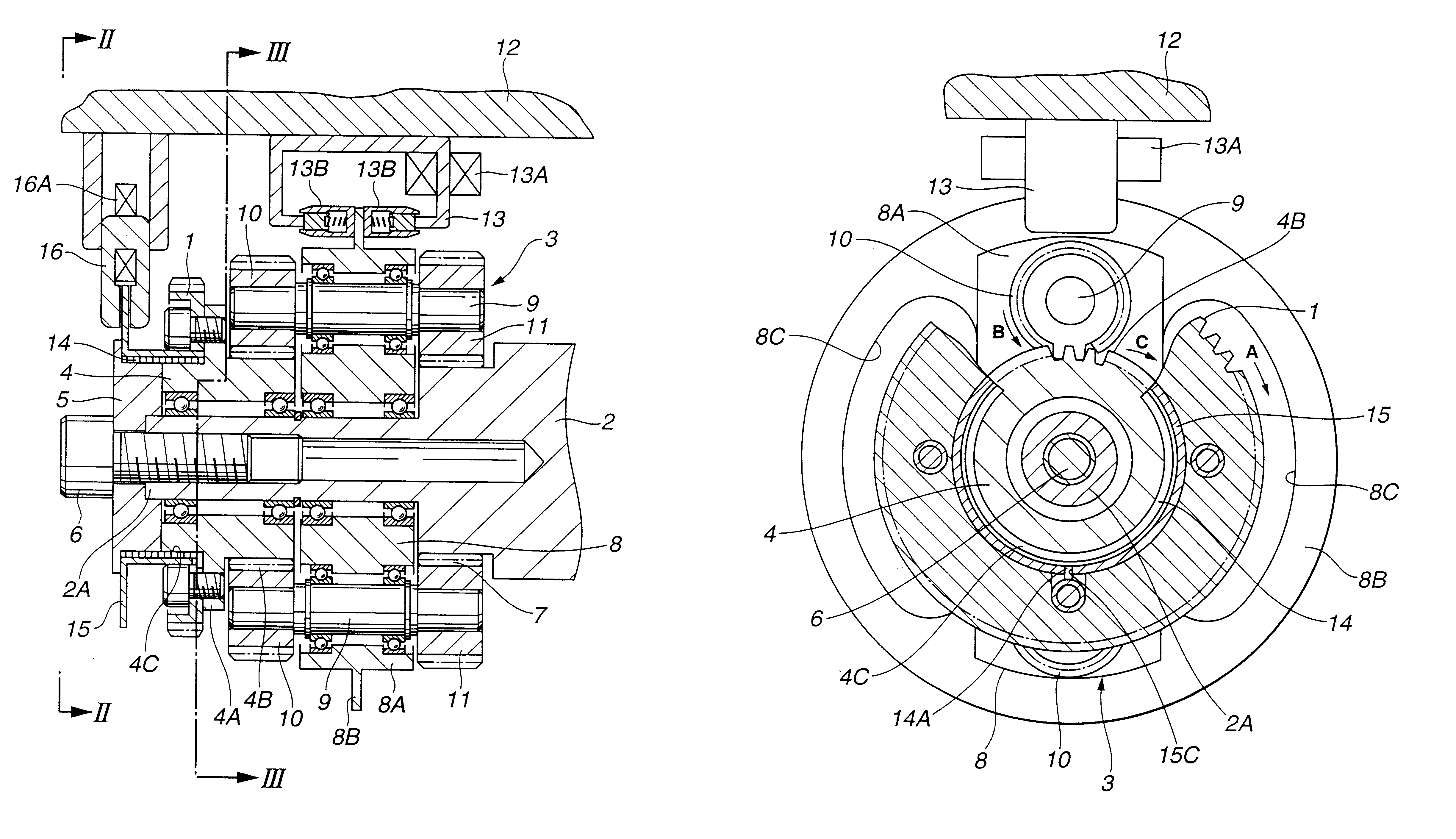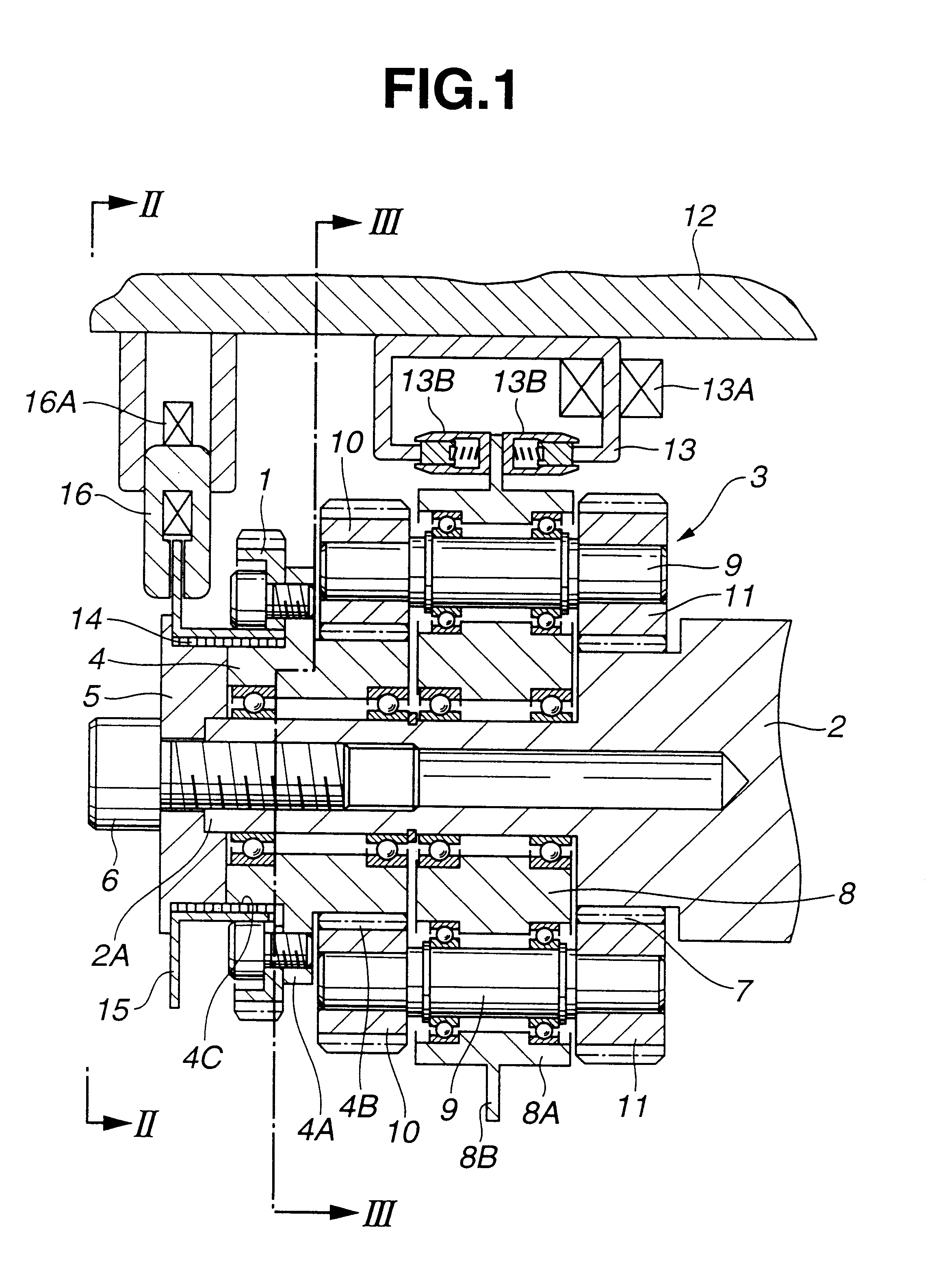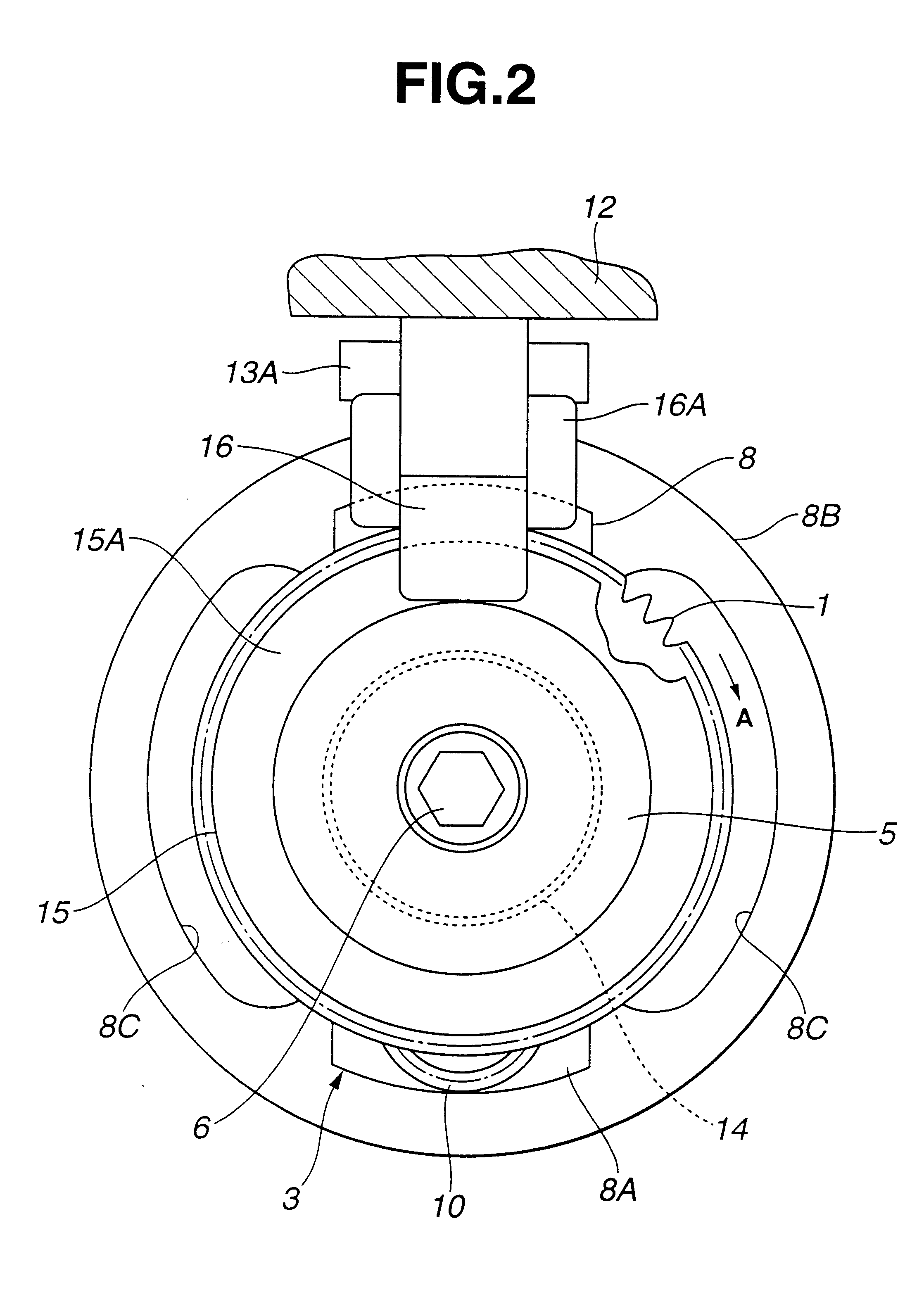Valve timing control system for internal combustion engine
- Summary
- Abstract
- Description
- Claims
- Application Information
AI Technical Summary
Problems solved by technology
Method used
Image
Examples
first embodiment
FIGS. 1 through 6 show the valve timing control system, according to the present invention.
A driven sprocket 1 acting as a rotor is connected to a crank shaft (not shown) of the internal combustion engine via a timing belt (not shown). The driven sprocket 1 is rotated by the crankshaft in a direction A (clockwise) in FIG. 2 around a camshaft 2.
The camshaft 2 is rotatably disposed on a cylinder head (not shown) of the internal combustion engine. In accordance with the rotation of the driven sprocket 1, the camshaft 2 is also rotated in the direction A in FIG. 2. The camshaft 2 acts to open and close either one of or both of intake valve and exhaust valves (not shown) of the internal combustion engine. The camshaft 2 has a small diameter portion 2A and an external gear 7. The small diameter portion 2A is located at an endmost portion of the camshaft 2 as shown in FIG. 2. Around an outer periphery of the small diameter portion 2A, there are rotatably disposed an input gear member 4 and...
second embodiment
The second embodiment ensures operations and advantages substantially the same as those of the first embodiment. Disclosed below are specifics about the operations and the advantages of the present invention.
At first, when the brake control coil 33A of the solenoid brake 33 is demagnetized as is seen in Table 2 and when the driven sprocket 21 rotates in the direction A (clockwise) in FIG. 8, the rotation of the driven sprocket 21 is transmitted from the external gear 26C of the input gear member 26 to the first planet gears 30. The first planet gears 30 rotate on the planet shafts 29 and revolve around the input gear member 26. The revolving force of the first planet gears 30 is transmitted to the carrier 28 as a rotational torque.
Under this condition, the first spring clutch 34 receives the torsional torque in the direction to increase its coil diameter under the torque condition satisfying Expression (3). With this, the first spring clutch 34 is slightly spaced apart from the oute...
third embodiment
The third embodiment ensures operations and advantages substantially the same as those of the first embodiment. Disclosed below are specifics about the operations and the advantages of the present invention.
At first, when the brake control coil 63A of the solenoid brake 63 is demagnetized as is seen in Table 3 and when the driven sprocket 51 rotates in the clockwise direction, the rotational force of the driven sprocket 51 is transmitted from the internal gear 57A of the input gear member 57 to the first planet gears 61. With this, the first planet gears 61 rotate on the planet shaft 60 and revolve along the input gear member 57. The revolving force of the first planet gears 61 is transmitted to the carrier 59 as a rotational torque.
In this condition, the first spring clutch 64 receives the torsional torque in the direction to increase its coil diameter under the torque condition satisfying Expression (7). Therefore, the first spring clutch 64 is slightly spaced apart from the outer...
PUM
 Login to View More
Login to View More Abstract
Description
Claims
Application Information
 Login to View More
Login to View More - R&D
- Intellectual Property
- Life Sciences
- Materials
- Tech Scout
- Unparalleled Data Quality
- Higher Quality Content
- 60% Fewer Hallucinations
Browse by: Latest US Patents, China's latest patents, Technical Efficacy Thesaurus, Application Domain, Technology Topic, Popular Technical Reports.
© 2025 PatSnap. All rights reserved.Legal|Privacy policy|Modern Slavery Act Transparency Statement|Sitemap|About US| Contact US: help@patsnap.com



